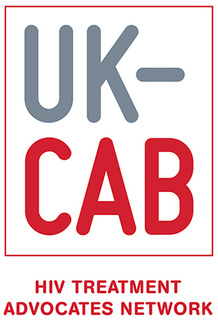Decisions about individual treatment and care
In line with provision of any care delivered by the NHS, people living with HIV should be as actively involved in decisions relating to their own care and treatment as they wish.
General Medical Council guidance sets out principles for good decision-making practice that apply to all decisions about care. Other professional regulatory bodies and national NHS guidance set out similar requirements. In summary, these state that people receiving care and health practitioners should work together to make informed decisions about treatment and care. People living with HIV can expect:
To be listened to and have their views about their health
To be actively engaged in discussions about their diagnosis, prognosis, treatment and care
To have access to information they want or need, in a way they can understand in appropriate formats, in order to make decisions
To be provided with opportunities and supported to make decisions for themselves
To have their decisions respected, including the right to stop or refuse treatment
To be provided with the resources and support to build their confidence and skills in joint decision-making
Trust and good communication between the person receiving care and the healthcare practitioner lead to better adherence and outcomes. A range of information resources and support services is available to help. Information can include printed, online information, telephone advice lines, with support services including treatment advocates and one-toone and group peer support. These all complement clinical services and are helpful in addressing the following factors that may have an impact on achieving good outcomes:
Physical and psychological readiness for treatment
Understanding how ART works, its efficacy and how this is measured
Concerns about taking ART or using specific ARV drugs, including potential or actual adverse effects
Concerns with possible adverse social consequences of actions such as talking to others about HIV
Confidence in the ability to adhere to ART and the importance of adherence
Psychological or cognitive issues that could have an impact on adherence (e.g. depression, memory problems, drug or alcohol use)
Issues related to living long term with HIV and ageing with HIV and the impact these might have on treatment and health management
Understanding of other treatments and medications, particularly in how these may interact with HIV and ART
Socio-economic, cultural or practical factors that could have an impact on adherence, (e.g. income, housing, faith, intimate partner violence, abuse, stigma and acceptance of their condition)
Confidence in talking to medical staff about HIV and other health issues
Accessing primary care services, particularly GPs, to manage other health concerns
Managing care plans across multiple long-term conditions and multiple treatment regimes
Engaging with palliative care services and actively participating in decisions about palliative care.
Involving people living with HIV in their healthcare supports long-term, chronic condition self-management (see Standard 2b ). The experiences of people receiving healthcare are important measures of service quality.
Not all populations of people living with HIV have the same personal or structural capacity to engage effectively in shared decision-making about their care. Specifically people who use drugs, those with liminal migration status and those facing communication challenges may be less able to engage in these processes. Particular attention needs to be paid to the structural disadvantage that this may entail.
Planning services
Participation of people living with HIV in service design, planning delivery and review allows providers to both understand and meet the needs of the communities served.
People living with HIV have consistently advocated for participation in decision-making about services they use and for people living with HIV to be treated with dignity and respect, to which the design, delivery and performance of clinical services contribute. The right to be consulted on healthcare is enshrined in law and clarified in NHS guidance. Attention needs to be paid to the diversity of experience among people living with HIV to ensure that this is reflected in practice.
Services need to build in adequate time for patient consultation and include training and capacity building that allows patients to understand their services, their place within NHS structures and the role of patients and communities in contributing to service planning. While HIV treatment and care are provided within the NHS, depending on where you live, sexual and reproductive health services and community support services may reside within local authorities and patients need to understand who is responsible for different aspects of their care in order to engage effectively. The community and voluntary sector can be engaged to support this.
Ultimately, management of HIV is likely to require greater involvement from primary care/GP services as is the case with other long-term conditions such as diabetes, chronic lung disease, and heart failure.
Practitioners and managers will need to acquire, and be supported to acquire, the skills and resources needed for fruitful engagement and consultation.
